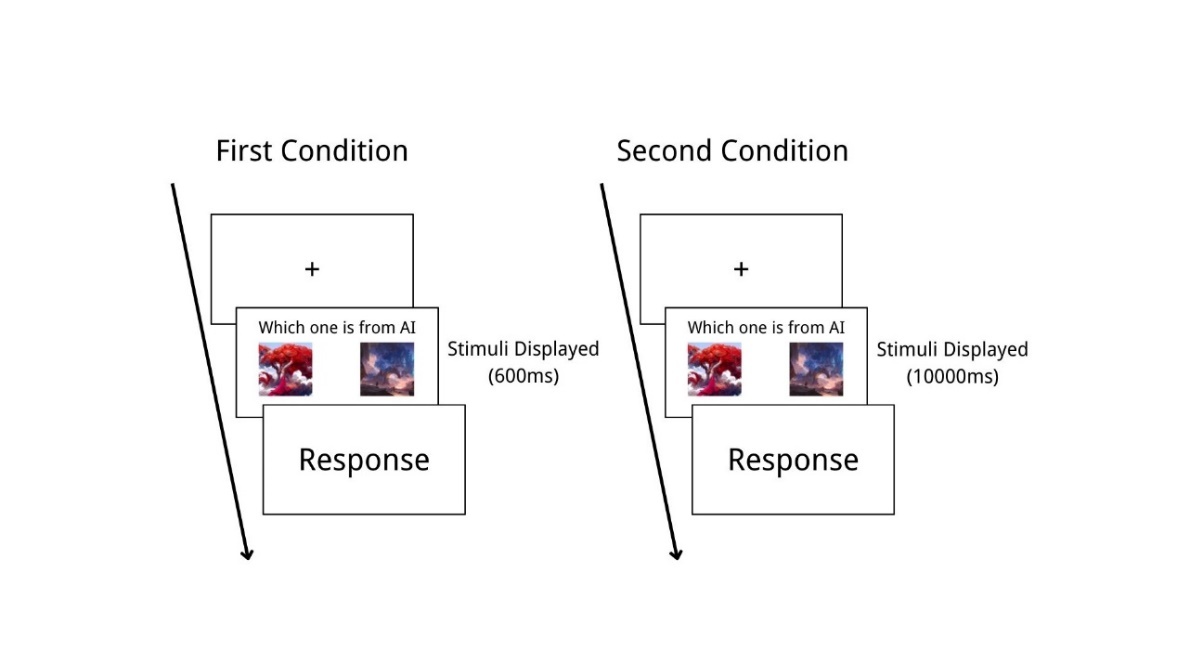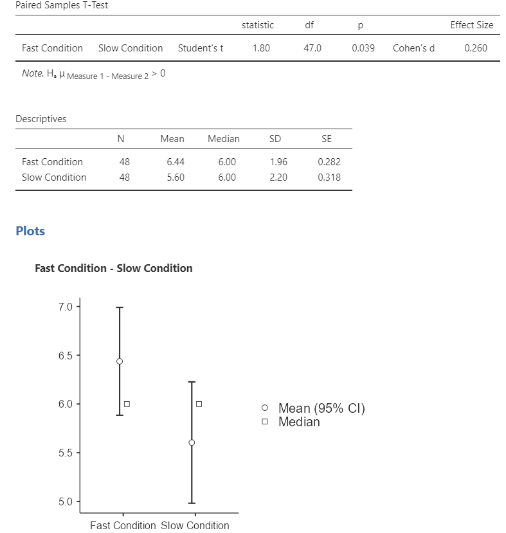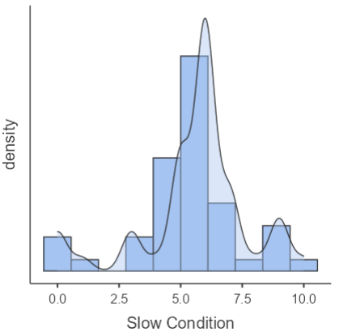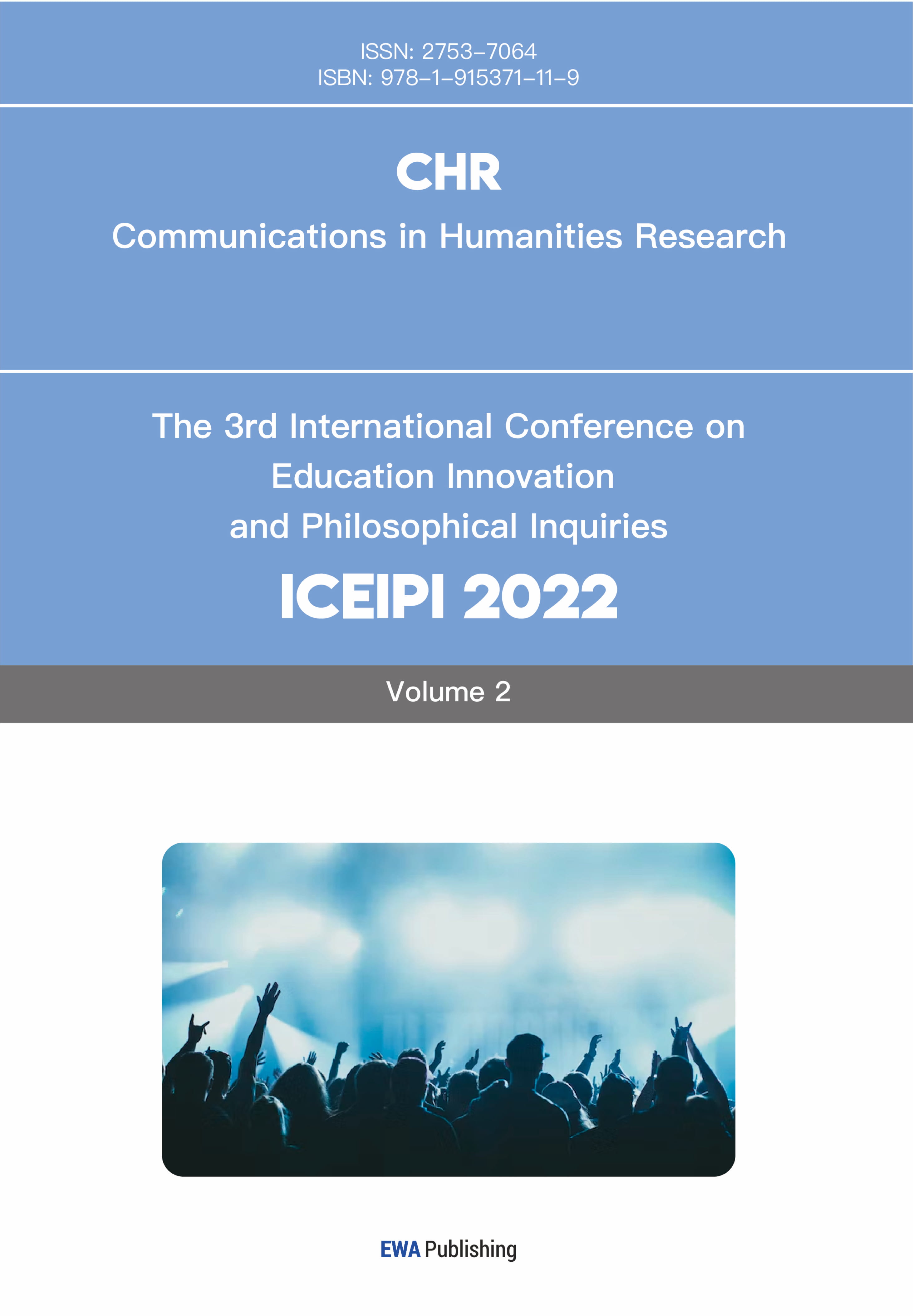1. Introduction
For a long time, intuition was considered the antithesis of reason, and the reason was seen as the key factor in making more accurate judgments. Looking back at the recent history of psychology, the father of Psychology Freud argued that knowledge could only be acquired through careful observation of things and refused to consider intuition as a way of acquiring knowledge in his early research [1]. Nobel laureate Daniel Kahneman believes that intuitive thinking processes information faster than rational thinking, but is also more prone to error, so it is more vital to use rational thinking when making important decisions [2]. Other cognitive scientists, however, argue that intuition leads to effective decision-making more generally than Kahneman suggests: Ap Dijksterhuis 2006 experiment found that when asking participants to select which of the four cars was the best, 60% of participants who were disturbed by completing additional brainteasers made the best choice, while only 25% participants who were not disturbed did [3].
In general, the term intuition has been understood in a variety of ways, and the more unifying concept is that it is an experience-based, rapid, and subliminal process, but a relatively exact definition and scientific perspective on this phenomenon was lacking until this century: In the past, intuition was often confused with instinct— Intuition is acquired, instinct is innate, but both allow human to react without thinking [4]. Until modern scientists described it in more precise words, such as Gladwell in his book Blink preferred to call intuition as “rapid cognition”, defined as the process by which people use limited evidence to make a rapid assessment of information, which is also the real research subject this paper discusses [5]. In Gladwell’s Thin-slicing Theory, human mind is divided into mainly 2 components: conscious rational mind and adaptive unconscious, while the second one is responsible for rapid cognitive process. He believed that conscious rational mind is adept at examining a wide range of evidence, in order to draw conclusions from that evidence to guide behavior, while adaptive conscious works fundamentally differently from the conscious, which is better at making decisions by assessing a very small amount of evidence.
Therefore, this paper attempts to support the view that there are situations in which rapid cognition does make better decisions than rational thinking. That is, to provide the counterintuitive fact, people are able to make more correct judgments with a small amount of evidence in a moment than they can after analyzing a large body of evidence. Gladwell argues that intuition is better at interpreting subtle evidence, such as facial cues that the conscious mind often misses [5]. The researcher Gigerenzer also emphasizes that intuition-based judgments can be based on reliable information while ignoring unnecessary information [6]. Therefore, when faced with a complex problem, rapid cognition can filter out unhelpful information and focus only on critical information, while rational thinking takes useless information into account and affects the accuracy of judgment. The logic behind is similar to Gervais, 2014's experiment: Perceptions of atheists, in which participants were provided with scenario information to determine the identity of a person [7]. The questions in the experiment were designed with the trap of providing a person with multiple unnecessary suspicious clues, such as "Is it more probable that Dax is A) a teacher / B) a teacher who does not believe in God or is a Buddhist/Christian/Muslim/Jewish/Hindu." But in fact option A already contains all the possibility of the option B: people are distracted by the extra irrelevant information and instead choose the more wrong option.
To have a more in-depth understanding rapid cognition, this paper builds on previous research findings to further investigate. Sun et al., 2022's study Comparison of Cognitive Differences of Artworks between Artist and Artistic Style Transfer found that when people use intuition as the criterion for judgment, they can more accurately distinguish between paintings created by artificial intelligence or human artists. However, as described in Sun et al., 2022, participants simply claimed to use "intuition" as the criterion for judgment, and the experimental design itself lacked strict controls on whether information was processed by intuition; Therefore, this paper is meant to further explore the accuracy of rapid cognition relative to rational thinking in a similar situation. Pictures of artworks are considered a worthwhile source of stimulus to try to provide information because it requires the viewers to process a great deal of information containing emotional information to appreciate, and just a few key details can decisively distinguish between different painting styles, while other general components are not obviously different and therefore misleading. Researchers in the previous study concluded a painting is consisted of five basic components: line, color, light and shade, stroke, and detail, and they concluded from the results that viewers were more likely to use the difference or effect of "stroke" as the key factor to distinguish between Ai and human paintings, namely people are more inclined to think that the difference between AI and human paintings are reflected in the detail of stroke [8].
This finding precisely satisfies the premise of this paper’s experiment subject, which is to construct a stimulus that contains complex information but contains simple cues that can serve as a key to judgment. Therefore, this experiment assumes that if people rely on rapid cognition to make judgments, they will focus only on key cues and exclude irrelevant cues to improve decision accuracy, while when they rely on rational thinking to make judgments, they will be disturbed by irrelevant cues to reduce decision accuracy. Therefore, it is expected that when pairs of Ai and human paintings are presented at a very fast speed, people are able to make more accurate differentiation.
2. Experiment Design
2.1. Participants.
This experiment used convenient sampling, and recruited volunteers by posting a "simple link" on the researcher’s social media. A total of 132 Chinese volunteers participated in the experiment. Participants who repeatedly entered the experiment or exceeded the time limit were rejected. Accordingly, data from 84 volunteers were excluded, leaving a final sample size of 48 (15 males and 33 females). Among these, 24 participants claimed to have had a relatively good education in the arts.
2.2. Materials
2.1.1. Stimuli
Although there are various AI-generated painting algorithms, the purpose of this study was to determine whether participants could rely on fast cognition to obtain more critical and accurate information in order to make more correct decisions. Therefore, only one AI algorithm was used in this study: “Disco Diffusion v5.6.”, which opens access to use of public, non-personal information from the service for research purposes.
• The researcher started with collecting digital paintings of different styles completed by human painters with a high degree of completion on the Artstation website.
• Based on the artist's description of the work and the content of the work itself, the researchers provided the AI algorithm with descriptors to construct a similar painting. The descriptor contains the content of the image, logical reminders of the space, the artist's style, and the overall color atmosphere.
• The AI processes each image a total of 250 times and generates the final image.
• Three undergraduate students from art schools were invited to compare the paintings done by AI and humans. Highly unanimous comments were received, summarised as follows: “The atmosphere of AI's artwork is quite excellent in completion, but the main difference is reflected in the fact that the scene design is not specific to the very small architectural details of the unit; Although it is easy for AI to replace large atmosphere drawings without looking at the details, the naturalness of various details, especially the character design, cannot be separated from the artificiality.”
2.1.2. Procedure
Participants were instructed to differentiate which of the two images played at the same time was done by the AI. This experiment was a within-subject design: each participant went through two conditions of the experiment. The ideal manipulation is one in which participants either do not have time to think thoroughly and rely on rapid cognition to make judgments, or have sufficient time to think to rely on rational thinking. Therefore in the first condition, the image pairs were played at a fast speed of 600ms and then hidden; in the second condition, the image pairs were displayed for 10000ms and then hidden. A total of 24 image pairs were played in random order. Each time a subject made a choice, the correct answer was hidden to avoid potential learning processes.

Figure 1: Illustration of the trial sequence and stimuli display. Participants will have a rapid priming and then quickly exposed to stimulus.
3. Results
Jamovi (version 2.2.5) was used to analyze data and generate statistical charts and graphs [9]. The paired samples t-test compared results from first condition (stimuli shown for 600ms) and second condition (stimuli shown for 10000ms), analysis from 48 results indicated that more correct choices were made when the image pairs were displayed for 600ms (M = 6.44, SD = 1.96) than when they were displayed for 10000ms (M = 5.60, SD = 2.20), t (47) = 1.80, p < .05, this is statistically significant, η2 = 0.26, this is a low-medium effect size; Participants who claimed to have had good arts education made overall more correct choices (n = 26, M = 5.39) than those who claimed they had not (n = 22, M = 4.58).

Figure 2: Descriptive plots

Figure 3: Box plot of fast responding condition

Figure 4: Box plot of slow responding condition
Figure 2, 3&4 shows the descriptive differences of results between the first and second conditions.
4. Discussion
The purpose of this experiment was to provide a fact that supports the value of rapid cognition for decision accuracy. The experiment was based on the finding of Sun et al., 2022 that people are better able to distinguish between AI and human paintings when they claim to use intuition as the criterion for judgment. This experiment further manipulates the speed of stimuli display, confirms that when people were confronted with complex human artworks and AI-generated art style transfer works, using fast cognition under fast stimulus exposure did help improve judgment accuracy, while using rational thinking to judge under slow exposure obtained relatively lower accuracy. The experiment also demonstrated that cognition is influenced by prior experience, with art-educated participants showing generally higher accuracy when differentiate. It is inferred from the experimental results that people can indeed make more accurate judgments by gaining more critical information through rapid cognition.
The results of this experiment are consistent with the description of the function of intuition in the aforementioned literature, namely, that intuition is good at interpreting subtle cues and filtering unnecessary information to make judgments based on reliable information. Hence, we're safe to stand on the position that intuition is neither irrational nor the opposite of logic [10]. Instead, it is a faster, more automated process that helps us quickly integrate previous experience when we need to make quick judgments. Economists Marco Sahm of the University of Bamberg and Robert K. von Weizsäcker of the Technical University of Munich studied the extent to which our background knowledge determines whether rationality or gut feeling is more effective [11]. Sahm and Weizsäcker were both big fans of chess, and they spent a lot of time reading chess books to analyze the game, which is considered to be the process of accumulating experience under rational thinking; Weizsäcker then went on to become a great chess player and won international prizes, but his play was largely based intuition.
In many cultures, people are raised to think twice before we act, which means that people believe that a well-thought-out decision is always better than a gut feeling, and people sometimes make the wrong decision as the value of intuition is long undervalued. This study tries to support an idea that when faced with a complex, almost unsolvable problem, one need not insist on making a completely rational decision but listen to the inner voice: intuition.
5. Conclusion
Overall, the main finding of this experiment was that people were able to achieve better decision-making performance than with rational thought when using rapid cognitive discrimination of abstract information in an experimental situation. With the rise and unstoppable development of AI art style transfer algorithms, this paper can also serve as a basis for whether human artists will not be replaced by AI in industry in the short future: even people with no art education can distinguish between ways of drawing that AI is not currently creative - collecting, integrating, and imitating art styles based on keywords - and that have significant deficiencies in detail and logic. Further research on how quickly people process such perceptual information about artworks may be needed to suggest how human painters should develop themselves to ensure that they are not outperformed by the rising AI.
References
[1]. Puner, H. W. (1947). Freud: his life and his mind, a biography. Howell, Soskin.
[2]. Kahneman, D. (2011). Thinking, fast and slow. Farrar, Straus and Giroux.
[3]. Dijksterhuis, A., & Nordgren, L. F. (2006). A Theory of Unconscious Thought. Perspectives on Psychological Science, 1(2), 95–109. https://doi.org/10.1111/j.1745-6916.2006.00007.x
[4]. Hogan, M. (2008). [Review of the book Inside intuition, by E. Sadler-Smith]. PsycCRITIQUES, 53(40). https://doi.org/10.1037/a0013388
[5]. Gladwell, M. (2005). Blink: The power of thinking without thinking. New York: Little, Brown and Co.
[6]. Gigerenzer, G., & Gaissmaier, W. (2011). Heuristic decision making. Annual review of psychology, 62, 451–482. https://doi.org/10.1146/annurev-psych-120709-145346
[7]. Gervais, W. M. (2014). Good for God? Religious motivation reduces perceived responsibility for and morality of good deeds. Journal of Experimental Psychology: General, 143(4), 1616–1626. https://doi.org/10.1037/a0036678
[8]. Sun, Y., Lyu, Y., Lin, P.-H., & Lin, R. (2022). Comparison of Cognitive Differences of Artworks between Artist and Artistic Style Transfer. Applied Sciences, 12(11), 5525. https://doi.org/10.3390/app12115525
[9]. The jamovi project (2021). jamovi (Version 1.6) [Computer Software]. Retrieved from https://www.jamovi.org
[10]. Malewska, Kamila. (2017). Intuition in Decision-Making on the Example of a Non-Profit Organization. 10.4018/978-1-5225-0731-4.ch018.
[11]. Marco Sahm & Robert K. von Weizsäcker & Robert K. von Weizsäcker, 2014. "Reason, Intuition, and Time," CESifo Working Paper Series 5134, CESifo.
Cite this article
Huang,Y. (2023). Understanding Intuition: Can Rapid Cognition Perform Better than Rational Thinking in Differentiating Artworks between Artist and Artistic Style Transfer. Communications in Humanities Research,3,407-413.
Data availability
The datasets used and/or analyzed during the current study will be available from the authors upon reasonable request.
Disclaimer/Publisher's Note
The statements, opinions and data contained in all publications are solely those of the individual author(s) and contributor(s) and not of EWA Publishing and/or the editor(s). EWA Publishing and/or the editor(s) disclaim responsibility for any injury to people or property resulting from any ideas, methods, instructions or products referred to in the content.
About volume
Volume title: Proceedings of the International Conference on Interdisciplinary Humanities and Communication Studies (ICIHCS 2022), Part 1
© 2024 by the author(s). Licensee EWA Publishing, Oxford, UK. This article is an open access article distributed under the terms and
conditions of the Creative Commons Attribution (CC BY) license. Authors who
publish this series agree to the following terms:
1. Authors retain copyright and grant the series right of first publication with the work simultaneously licensed under a Creative Commons
Attribution License that allows others to share the work with an acknowledgment of the work's authorship and initial publication in this
series.
2. Authors are able to enter into separate, additional contractual arrangements for the non-exclusive distribution of the series's published
version of the work (e.g., post it to an institutional repository or publish it in a book), with an acknowledgment of its initial
publication in this series.
3. Authors are permitted and encouraged to post their work online (e.g., in institutional repositories or on their website) prior to and
during the submission process, as it can lead to productive exchanges, as well as earlier and greater citation of published work (See
Open access policy for details).
References
[1]. Puner, H. W. (1947). Freud: his life and his mind, a biography. Howell, Soskin.
[2]. Kahneman, D. (2011). Thinking, fast and slow. Farrar, Straus and Giroux.
[3]. Dijksterhuis, A., & Nordgren, L. F. (2006). A Theory of Unconscious Thought. Perspectives on Psychological Science, 1(2), 95–109. https://doi.org/10.1111/j.1745-6916.2006.00007.x
[4]. Hogan, M. (2008). [Review of the book Inside intuition, by E. Sadler-Smith]. PsycCRITIQUES, 53(40). https://doi.org/10.1037/a0013388
[5]. Gladwell, M. (2005). Blink: The power of thinking without thinking. New York: Little, Brown and Co.
[6]. Gigerenzer, G., & Gaissmaier, W. (2011). Heuristic decision making. Annual review of psychology, 62, 451–482. https://doi.org/10.1146/annurev-psych-120709-145346
[7]. Gervais, W. M. (2014). Good for God? Religious motivation reduces perceived responsibility for and morality of good deeds. Journal of Experimental Psychology: General, 143(4), 1616–1626. https://doi.org/10.1037/a0036678
[8]. Sun, Y., Lyu, Y., Lin, P.-H., & Lin, R. (2022). Comparison of Cognitive Differences of Artworks between Artist and Artistic Style Transfer. Applied Sciences, 12(11), 5525. https://doi.org/10.3390/app12115525
[9]. The jamovi project (2021). jamovi (Version 1.6) [Computer Software]. Retrieved from https://www.jamovi.org
[10]. Malewska, Kamila. (2017). Intuition in Decision-Making on the Example of a Non-Profit Organization. 10.4018/978-1-5225-0731-4.ch018.
[11]. Marco Sahm & Robert K. von Weizsäcker & Robert K. von Weizsäcker, 2014. "Reason, Intuition, and Time," CESifo Working Paper Series 5134, CESifo.









